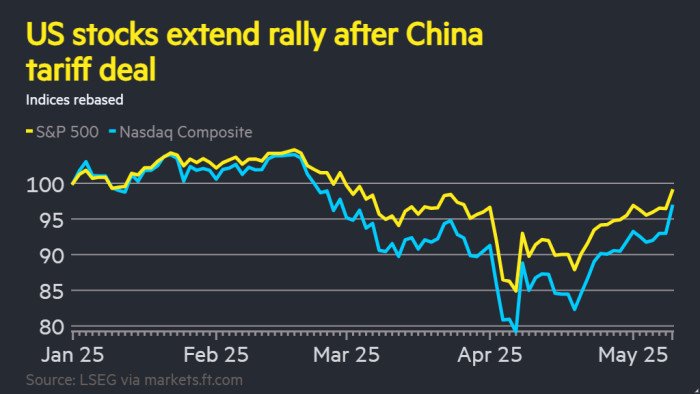China’s Cross-Border Inter- bank Payment System (CIPS) was founded in 2015, with a series of tests completed over the following years. In March this year, China’s central bank, the Peo- ple’s Bank of China (PBC), announced that the CIPS would be fully connected to the 10 Southeast Asian economies of the ASEAN block plus six Middle Eastern countries.
Uptake is already increasing, with the volume of ASEAN cross-border RMB set- tlements reaching 5.8trn yuan ($796bn) in 2024, a rise of 120% in just three years. (To clarify, Chinese money is referred to by two names: the Chinese yuan (CNY) and renminbi (RMB), which translates to ‘Peo- ple’s Currency’. The distinction between CNY and RMB is subtle. RMB is the official currency of China. The yuan is the prin- cipal unit of account for that currency.)
The new system supports trade be- tween China and the rest of the world by facilitating direct payments in yuan and onshore settlement. It enables real-time or near real-time settlement and does not rely on intermediary banks, reducing transaction and handling fees.
One of the biggest advantages of the Chinese system is that payments can be cleared within seconds, in comparison with three to five days for Swift trans- fers. Earlier this year, a pilot project saw a transfer between Hong Kong and Abu Dhabi settled in seven seconds with a 98% reduction in fees. A reported 23 central banks took part in system tests by March 2025.
CIPS is operated by China International Payment Service, a company regulated by the PBC, and Beijing hopes it will play a huge role in internationalising the RMB. It offers a secure, real-time network open to financial institutions that are either direct or indirect participants.
The former tend to be large banks with accounts with the PBC, such as HSBC and Standard Chartered, which can process and settle cross-border RMB payments for themselves or on behalf of indirect participants. It employs blockchain tech- nology, which its supporters say makes compliance with anti-money laundering regulations straightforward.
It is the speed of transactions that may prove the biggest selling point in expanding CIPS worldwide, with bank customers constantly questioning why Swift transfers take so long in the age of digital banking. Swift, or the Society for Worldwide Interbank Financial Telecom- munication, is currently the most popular system for international payments. It is a cooperative society owned by more than 2,000 member financial institutions, con- nects more than 11,000 banks in almost every country and handles trillions of dollars a day.
Swift does not directly settle payments and strictly speaking, it is a messaging service rather than payment platform. It allows financial institutions to securely exchange information in a standard man- ner, including payment instructions and confirmation. Launched in 1973, it is based in Belgium and overseen by the National Bank of Belgium, in partnership with ma- jor central banks.
However, Swift does have one big ad- vantage. While CIPS only handles pay- ments in RMB, Swift can transfer the US dollar, UK pound, euro, Japanese yen, Canadian dollar, Australian dollar, Swiss franc, Polish zloty, Swedish krona, Czech koruna and Hungarian forint.
Demand for alternatives to Swift has grown as both Iranian and Russian enti- ties have been blocked from using it in recent years in the face of international sanctions. This forced banks in those countries to deal directly with each other over transfers, adding bureaucracy, time and costs to the process.
Although not particularly popular, Rus- sia launched its own cross-border transfer system called the System for Transfer of Financial Messages (SPFS) after West- ern governments threatened – but did not follow through – on blocking it from Swift following the Russian invasion of Crimea in 2014. In addition, Russia has made greater use of RMB in global pay- ments since the imposition of sanctions over its wider invasion of Ukraine, and companies such as Rusal and Rosneft have issued yuan-denominated bonds.
Central bank digital currencies
CIPS is also encouraging the uptake of China’s digital yuan, also known as the e-CNY. This is a central bank digital currency (CBDC) in contrast with cryptocurrencies such as Bit- coin, the use of which is restricted in China. The digital yuan is a re- tail CBDC valued one-to-one with the physical yuan and is mainly aimed at replacing cash in China’s economy. It is already used for retail transactions, on public transport and on platforms such as Alipay.
The e-CNY has been tested in pilot projects in individual Chinese cities, then across the country as a whole, and its international use is now being encouraged by the Chinese government. The M-Bridge project has been set up to run pilot cross-border payments in digital currencies issued by the central banks of China, Hong Kong, Thai- land and the United Arab Emirates.
Some have described the digital RMB as a digital strand of China’s Belt and Road strategy, whereby it is developing a global network of ports, roads and railways to support trade with China and extend Chinese soft power. Last year, Thailand made its first oil settlement in digital RMB, while Ma- laysia, Singapore and four other ASEAN countries have added the RMB to their forex reserves.
China has had an early advantage in launching its CBDC. Three days after be- ginning his second term of office on 20 January 2025, US President Donald Trump prohibited central bank digital currencies in the US and blocked all federal agencies from establishing, issuing or promoting them anywhere in the world. However, both the UK and Australia are exploring the possibility of introducing their own CBDCs.
In a report published last August, law firm Clyde and Co said: “CBDCs offer sev- eral advantages, including increased fi-nancial inclusion by providing access to digital financial services for unbanked populations. They enhance payment ef- ficiency, reducing the need for interme- diaries and lowering transaction costs.”
They also enable central banks to maintain control over monetary policy and “respond more effectively to economic challenges, such as managing inflation or ensuring the smooth functioning of financial markets”, it said.
However, while Bitcoin operates on a decentralised, open-source ledger, the digital yuan is managed by the PBC on a centralised ledger with closed-source code. This has raised fears that it could be used for surveillance, as users’ transac- tions could be tracked.
In addition, Clyde & Co warned that the introduction of CBDCs could disrupt existing financial systems, “potentially leading to the disintermediation of com- mercial banks and altering the traditional banking model. Interoperability with ex- isting payment systems and other digital currencies is another hurdle, requiring extensive technological coordination”.
Impact on Africa
It remains to be seen whether the im- plications of the CIPS and e-CNY will be largely positive or negative for Africa. When its reach is eventually extended into Africa, CIPS will offer the continent another option for money transfers but also provide more competition for African digital currencies. In 2021, Nigeria became only the second country after the Baha- mas to launch a CBDC but South Africa is exploring options for a wholesale version and Ghana is testing the retail e-cedi.
CIPS could help lower financial costs in sub-Saharan Africa, which is the most expensive global region in which to send and receive money, with average costs of just under 8% of the transfer amount, according to the IMF. Its extension into the continent will certainly help to expand Chinese soft power in Africa at a time when some Western governments are severely curtailing donor pro- grammes and Westerns banks have slashed their African operations.
The new platform and the e-CNY could help reduce global depend- ence on the US dollar. At present, dollar assets comprise about 59% of global foreign currency reserves, with the euro taking another 20%, according to the Brookings Insti- tution. Moreover, the dollar was used in 54% of global foreign trade invoices in 2022, with 58% of all non-Eurozone payments made in dollars.
At the same time, the proportion of China’s cross-border payments settled in RMB has rapidly increased from 40% in 2021 to 53% last year. Moreover, the European Union is continuing to promote the use of the euro, which is used in some African financing and bonds.
More effort is also being put into encouraging the use of African currencies. In particular, the Pan- African Payment and Settlement System (PAPSS) allows cross-border payments, clearing and settlements to be made in more than 40 African curren- cies. Launched by African Export-Import Bank (Afreximbank) and the African Un- ion in 2022, it is a cornerstone of efforts to encourage intra-African cross-border trading through the African Continental Free Trade Area.
It will be interesting to see how the West as a whole and the Swift network in particular respond to the new challenge presented by CIPS, particularly in terms of being able to speed up the pace of trans- actions. Moreover, the progress of the digital yuan will certainly be watched by other governments considering launching their own CBDCs. Several African gov- ernments are particularly keen to launch their own digital currencies but competi- tion in this space is likely to intensify over the next few years.
It is the speed of transactions that may prove the biggest selling point in expanding CIPS worldwide, with bank customers constantly questioning why Swift transfers take so long in the age of digital banking.
© Copyright IC Publications 2022 Provided by SyndiGate Media Inc. (Syndigate.info).







